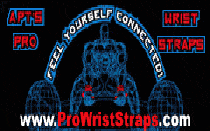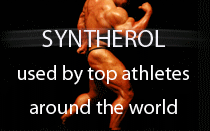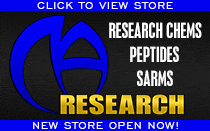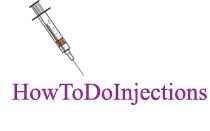4.2. 17â-TBOH and aromatase
17â-TBOH and other C19 norandrogens [84] are reported to not be substrates for the aromatase enzyme [85] and [86] and to be relatively non-estrogenic [87] and [88]; although some debate exists regarding 19-nortestosterone (a C19 norandrogen) to undergo aromatization and induce estrogenic effects [84] and [89]. In vitro bioassays and cell culture experiments demonstrate that 17â-TBOH and its metabolites have a very low binding affinity for ERs and have low estrogenic activity with approximately 20% of the efficacy of 17â-E2 [87]. Reports also suggest that 17â-TBOH reduces serum 17â-E2 concentrations in vivo [81], [90] and [91], inhibits estrus in ovariectomized estrogen-treated female rats [92], and exerts a variety of anti-estrogenic effects [92], perhaps through hypothalamic feedback inhibition of the production of testosterone (a substrate necessary for endogenous 17â-E2 biosynthesis) [93] and [94]. Additionally, in various fish models, environmental exposure to 17â-TBOH downregulates brain CYP19B (aromatase B) and upregulates gonadal CYP19A (aromatase A) expression in females, but not males [95] and [96], while reducing tissue concentrations and tissue-specific gene expression of vitellogenin (VTG), a protein found in oviparous animals which is positively associated with exposure to estrogenic compounds, in both sexes [81], [88], [93], [94], [95], [96], [97], [98], [99], [100] and [101]; together these may represent compensatory responses resulting from reduced endogenous estrogen concentrations [101]. Conversely, others report that 17â-TBOH either increases [81] and [102] or has no effect [81], [90] and [103] 17â-E2 concentrations in ruminants and oviparous animals.
The mechanism(s) through which 17â-TBOH alters estrogenic activity remain to be elucidated, but may be related to the (1) inhibition of endogenous androgen synthesis [104] and [105] (presumably through pituitary or hypothalamic feedback inhibition [93] and [106]), (2) altered expression or activity of the aromatase enzyme [96] and [107], and/or (3) down-regulation of ERá or ERâ expression [95] X. Zhang, M. Hecker, J.W. Park, A.R. Tompsett, J. Newsted and K. Nakayama et al., Real-time PCR array to study effects of chemicals on the hypothalamic-pituitary-gonadal axis of the Japanese medaka, Aquat Toxicol 88 (2008), pp. 173–182. Abstract | Article | PDF (797 K) | View Record in Scopus | Cited By in Scopus (12)[95] and [108]; however, they do not appear to be mediated by direct androgen receptor activation as co-treatment with 17â-TBOH and flutamide (an AR antagonist) also results in anti-estrogenic activity in female fathead minnows [81]. To summarize, 17â-TBOH is not a substrate for the aromatase enzyme, but may exert both anti- and pro-estrogenic effects, with the bulk being anti-estrogenic.
5. Mechanisms of body growth
The growth promoting effects of 17â-TBOH administration are well known [56], [109] and [110], as numerous studies have reported that administration of 17â-TBOH or its acetate ester enhance total body growth and skeletal muscle mass in various rodent and livestock models when administered alone [25], [26], [75], [76], [77], [78], [79], [80], [83], [86], [90], [102], [103], [111], [112], [113], [114], [115], [116], [117], [118], [119], [120], [121], [122], [123], [124], [125], [126], [127], [128], [129], [130], [131], [132], [133], [134], [135] and [136] or when administered in combination with 17â-E2 [86], [90], [103], [104], [111], [112], [123], [127], [128], [129], [137], [138], [139], [140], [141], [142], [143], [144], [145], [146], [147], [148], [149], [150], [151], [152], [153], [154], [155], [156], [157], [158], [159], [160], [161], [162], [163], [164], [165], [166], [167], [168], [169], [170], [171], [172], [173], [174], [175], [176] and [177]. Interestingly, several studies have reported that administration of 17â-TBOH in combination with 17â-E2 results in greater body growth and skeletal muscle mass than either steroid alone [103], [112], [127], [128], [171], [172] and [173]; indicating that 17â-E2 enhances the anabolic effects of 17â-TBOH, as others have suggested [109] and [110]. Ultimately, enhanced body mass results from increases in lean mass (predominantly comprised of muscle and bone) and/or fat mass; thus, the known effects of 17â-TBOH on each of these tissues will be discussed. In addition, the effects of 17â-TBOH on erythropoiesis will be briefly discussed because androgens are known to exert potent effects on red blood cell production.
5.1. Effects of 17â-TBOH on skeletal muscle
Skeletal muscle expresses ARs to varying degrees among species [178], [179], [180], [181] and [182]. As such, androgens induce skeletal muscle protein accretion following dimerization of ARs (Fig. 1). Skeletal muscle expresses 5á reductase and dose-dependently converts testosterone to DHT [183], however, our laboratory [19] and [20] and others [24] have recently demonstrated the 5á reduction of testosterone is not required for skeletal muscle maintenance in hypogonadal animals or humans. In addition, skeletal muscle expresses ERs within both sexes of various species [184], [185] and [186] and 17â-E2 administration has been shown to protect against loss of muscle strength in ovariectomized female rodents [187] and [188]; suggesting that aromatization might contribute to the effects of testosterone on skeletal muscle in males.
In ruminants, 17â-TBOH, alone or in combination with 17â-E2, has been shown to increase the cross-sectional area (CSA) of type I, but not type II, skeletal muscle fibers and induce a fiber switch from more glycolytic to more oxidative fibers, indicating an increase in the oxidative capacity of skeletal muscle [152] and [189]. However, the presence of 17â-E2 is not required for 17â-TBOH to augment skeletal muscle mass as demonstrated in rodent models which experience significant growth of the levator ani muscle [25], [26], [76], [77], [78], [79], [80] and [83] and other skeletal muscles [25], [26], [76], [77], [78], [79], [83], [117], [126] and [133] following 17â-TBOH administration, despite lacking the primary source of endogenous 17â-E2. However, not all rodent models experience peripheral (i.e., hindlimb) muscle growth following 17â-TBOH administration [115], [118] and [126]; although, elevated skeletal muscle DNA concentrations are present in muscles that do not increase in mass in response to 17â-TBOH treatment [117]. The inconsistent skeletal muscle response to 17â-TBOH in rodents may occur because certain peripheral rodent skeletal muscles possess a low percentage of AR positive myonuclei (i.e., extensor digitorum longus with 7% AR positive myonuclei) [181]. Conversely, human myonuclei are approximately 50% AR positive [182] and ruminants are highly sensitive to androgen-induced myotropic stimuli due to a high concentrations of ARs in bovine skeletal muscle [178] and [179] and skeletal muscle satellite cells [180]. Similarly, the androgen-sensitive levator ani muscle in rodents contains approximately 74% AR positive myonuclei [181] and thus experiences robust atrophic responses to castration [190] and hypertrophic responses to androgen administration [25], [26], [76], [77], [78], [79], [80] and [83].
The underlying mechanism(s) through which 17â-TBOH enhances skeletal muscle growth have not been completely characterized; although, it is suspected that 17â-TBOH exerts direct anabolic effects on skeletal muscle primarily via AR activation and associated nuclear translocation and transcription or via modulation of the Wnt/â-catenin pathway, similar to other androgens [26] (Fig. 1). In vitro evidence indicates that 17â-TBOH induces translocation of human ARs to the nucleus in a dose-dependent manner and induces gene transcription to at least the same extent as DHT, the most potent endogenous androgen [26]. Further, 17â-TBOH treatment of cultured bovine satellite cells upregulates AR mRNA expression [191], perhaps explaining the observations that administration of 17â-TBOH increases satellite cell activation and proliferation in various species [117], [191] and [192].
Additionally, 17â-TBOH may induce anabolic effects via mechanisms associated with alterations in endogenous growth factor concentrations [193] or the responsiveness of skeletal muscle to such growth factors [117] (Fig. 3). For example, 17â-TBOH alone or in combination with 17â-E2 upregulates insulin-like growth factor (IGF-1) mRNA in a variety of tissues, including the liver and skeletal muscle in vivo [140], [141], [160], [170], [191], [194] and [195] and satellite cells in vitro [140], via distinct androgen- and estrogen receptor mediated mechanisms [180] and [196]; although 17â-TBOH alone (without the addition of 17â-E2) does not appear to alter skeletal muscle IGF-1 mRNA [184]. Ultimately, the upregulation of IGF-1 mRNA translates into increased serum IGF-1 in 17â-TBOH treated animals [138], [140], [148], [150], [160], [165], [170], [192], [194], [197] and [198], which may stimulate satellite cells proliferation and fusion as has been shown in vitro [117]. Interestingly, 17â-TBOH administration also appears to increase the responsiveness of satellite cells to the proliferating and differentiating effects of IGF-1 and fibroblast growth factor [117]. These results are intriguing considering that the inhibition of several of the downstream targets of IGF-1 (e.g., Raf-1/MAPK kinase (MEK)1/2/ERK1/2, or phosphatidylinositol 3-kinase (PI3K)/Akt) suppresses 17â-TBOH induced satellite cell proliferation in culture [180]. Thus, it seems likely that increased growth factor expression resulting from 17â-TBOH administration is one mechanism underlying the anabolic responses to this steroid in skeletal muscle, especially considering that binding of IGF-1 to the type 1 IGF receptor is required for proliferation of satellite cells [180].
Full-size image (67K)
Fig. 3. Potential mechanisms underlying the anabolic effects of trenbolone on skeletal muscle. 17â-TBOH = trenbolone, GR = gluccocorticoid receptor, AR = androgen receptor, IGF-1 = insulin-like growth factor 1, IGF-1R = insulin-like growth factor 1 receptor.
View Within Article
17â-TBOH may also preserve or increase lean mass via anti-catabolic effects associated with reductions in endogenous glucocorticoid activity [126] and [135] or with the suppression of amino acid degradation within the liver [118], [122], [134], [199] and [200] (Fig. 3). For example, 17â-TBOH administration has been shown to reduce circulating corticosterone concentrations in rodents [115], [118] and [122] and resting cortisol in cattle [150]. In vivo [122] and in vitro [201] evidence indicates that 17â-TBOH works in the adrenals to suppress adrenocorticotropic hormone (ACTH)-stimulated cortisol synthesis and to suppress cortisol release. Further, 17â-TBOH has been shown to reduce the ability of cortisol to bind to skeletal muscle glucocorticoid receptors (GRs) [121] and to down regulate skeletal muscle GR expression [108] and [121]. Thus the multiple anti-glucocorticoid actions induced by 17â-TBOH explain, in part, the 17â-TBOH-mediated increase in total body nitrogen retention [133], [151], [155], [156] and [202] and the reductions in total [80], [129] and [156] and myofibrillar protein degradation in several species [126], [135], [156], [202] and [203]; especially considering that 17â-TBOH reportedly reduces skeletal muscle protein synthesis in male rodents [80] and [133]. As a result of its anti-glucocorticoid actions, 17â-TBOH produces a more robust inhibition of protein degradation than does testosterone, which only slightly reduces protein degradation while increasing protein synthesis [204]. Thus, future research comparing the effectiveness of 17â-TBOH and the endogenous androgens in altering skeletal muscle degradation via the ubiquitin proteasome system or other pathways associated with muscle atrophy [205] is warranted and may further elucidate the anti-catabolic mechanism(s) underlying the potent augmentation of skeletal muscle mass associated with 17â-TBOH.

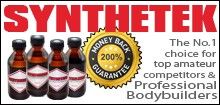



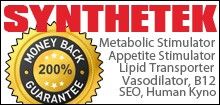





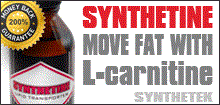


















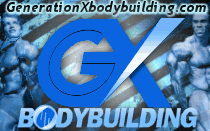


.gif)
























